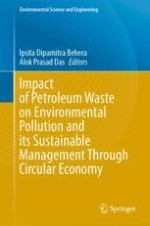The purpose of this book is to discuss the challenges that have arisen due to petroleum hydrocarbon wastes, their harmful effects to the ecosystem, and limitations as well as improvement of current biological techniques’ use for management of petroleum hydrocarbon wastes. This book focuses on the role of advanced green engineering technologies for sustainable petroleum waste management in building an economic supportable society as a basic need of developing countries. The rapid economic growth achieved in last decade has been paralleled by an increase in global energy consumption resulting generation of massive amount of industrial wastes. Petroleum wastes release through spillages and leakage from underground tanks, steamers, unplugging of oil wells, and abandoned oil refinery sites that cause extensive contamination of surface soils, groundwater, seas, and ocean resulting in ecosystem damage. Apart from these, petroleum industries release a significant amount of hydrocarbon wastes during processing of crude oil. Improper waste management technique of these petroleum wastes may cause a serious effect toward the living beings. The presence of these hazardous wastes in the environment will make vulnerable conditions to the aquatic as well as terrestrial life. Till date, a number of conventional techniques have been implemented to treat these petroleum hazardous wastes, but biological treatment is more efficient among all on basics of economic and environmental point of view. Bioaugmentation, biostimulation, and combinatorial bioaugmentation and biostimulation waste management strategies are implemented to treat these wastes. In addition to these techniques, biocomposting/biopile, land treatment, and bio-slurry methods have also been employed to reduce the endanger effects of petroleum wastes. Integrating waste management through environmental sustainability and economic development is one of the prime milestones in the circular economy. There is an exigent necessity for developing countries to go ahead toward a circular economy for achieving its Sustainable Development Goals.
